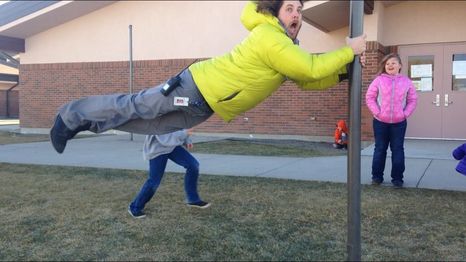Yang Push hands as it comes from Tung Ying Chieh
>Stationary 1 hand
>Stationary 2 hand
>stick and follow (moving) generally 1 hand, similar to what you were showing but there is no fixed stepping pattern
>3 step (moving)
>4 corner (moving) there is a lock practices in this as well
>There is also a 1 step, but this is quick and attack and response and have done it rarely
>free style with 13 postures applications work and as you advance even qinna, this is where I would end up on the floor when working with my Shifu.
I have some minor Chen push hands training, but I never got past stationary 2 hands in Chen. But there is a lot of qinna and Shuaijiao in Chen too.
Is push hands for fighting? Yes and no.
There are fighting applications in it, The best Qinna I have ever come across is my Yang Shifu. I have trained qinna with a lot of folks, one of those Yang Jwing Ming. I can always feel it coming, sometimes I can stop it, sometimes I can't (see Yang Jwing Ming). But with my taiji shifu I never feel it coming. I am all of a sudden locked. His explanation for this is "You lock yourself". It comes from his sensitivity and patients. I am in the right position and he applies very little pressure and I am locked. But If you are going to get in a fight, and all you have is push hands, you will likely lose, push hands for the most part is a tool. However there is a saying in Taijiquan, if you understand the 13 postures, you can fight. And I do agree with that. But that is not push hands, it can be, and is combined with push hands. I am in a a push hands group and there is a lot of joint locking and throwing going on, we do not get into striking. But this is a freestyle push hands group, there are no set patterns here. But we all know it is a tool and there is more to learn. Taijiquan has a lot more than just pushing. But that pushing, if done right, at the right time, will take someones root and knock them off balance (which you could then take the advantage) or it can knock them on the floor.
Is it for sensitivity and learning to find someone else's center? Yes. But trained properly, it has real world, fighting applications. Even if that applications it in support of something else like kicking, punching, shuaijiao or qinna.
As for the OP video, some of it I know because it is straight up Yang style. Some of it I would have to experience for myself for me to believe it
This is a demo, from my lineage, most of which I have experinced over the years. This was Tung Hu Ling, oldest son of Tung Ying Chieh, and classmate and friend of my Shifu. The other guy is (a young) Tung Kia Ling oldest son Tung Hu Ying


